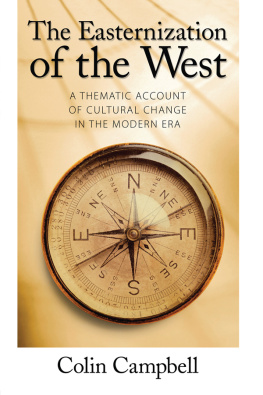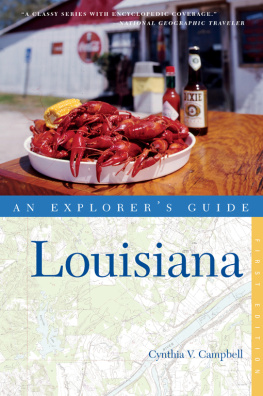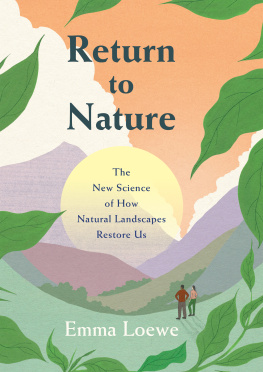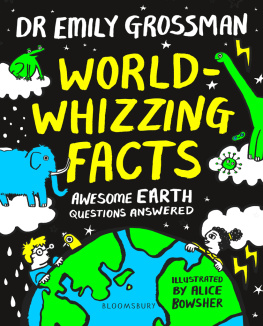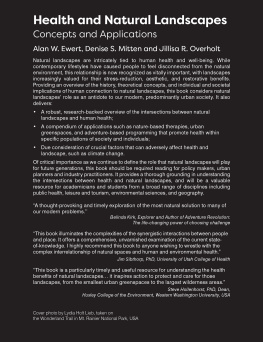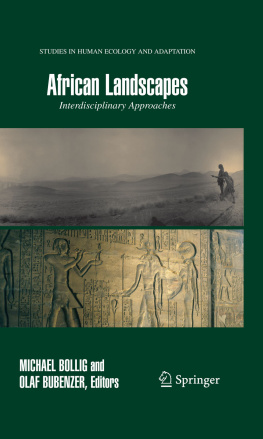SueEllen Campbell - The Face of the Earth: Natural Landscapes, Science, and Culture
Here you can read online SueEllen Campbell - The Face of the Earth: Natural Landscapes, Science, and Culture full text of the book (entire story) in english for free. Download pdf and epub, get meaning, cover and reviews about this ebook. year: 2012, publisher: University of California Press, genre: Romance novel. Description of the work, (preface) as well as reviews are available. Best literature library LitArk.com created for fans of good reading and offers a wide selection of genres:
Romance novel
Science fiction
Adventure
Detective
Science
History
Home and family
Prose
Art
Politics
Computer
Non-fiction
Religion
Business
Children
Humor
Choose a favorite category and find really read worthwhile books. Enjoy immersion in the world of imagination, feel the emotions of the characters or learn something new for yourself, make an fascinating discovery.

- Book:The Face of the Earth: Natural Landscapes, Science, and Culture
- Author:
- Publisher:University of California Press
- Genre:
- Year:2012
- Rating:4 / 5
- Favourites:Add to favourites
- Your mark:
- 80
- 1
- 2
- 3
- 4
- 5
The Face of the Earth: Natural Landscapes, Science, and Culture: summary, description and annotation
We offer to read an annotation, description, summary or preface (depends on what the author of the book "The Face of the Earth: Natural Landscapes, Science, and Culture" wrote himself). If you haven't found the necessary information about the book — write in the comments, we will try to find it.
The Face of the Earth: Natural Landscapes, Science, and Culture — read online for free the complete book (whole text) full work
Below is the text of the book, divided by pages. System saving the place of the last page read, allows you to conveniently read the book "The Face of the Earth: Natural Landscapes, Science, and Culture" online for free, without having to search again every time where you left off. Put a bookmark, and you can go to the page where you finished reading at any time.
Font size:
Interval:
Bookmark:
The Face of the Earth
Natural Landscapes, Science,
and Culture
SueEllen Campbell
with Alex Hunt, Richard Kerridge,
Tom Lynch, and Ellen Wohl

University of California Press, one of the most distinguished university presses in the United States, enriches lives around the world by advancing scholarship in the humanities, social sciences, and natural sciences. Its activities are supported by the UC Press Foundation and by philanthropic contributions from individuals and institutions. For more information, visit www.ucpress.edu .
University of California Press
Berkeley and Los Angeles, California
University of California Press, Ltd.
London, England
2011 by The Regents of the University of California
Library of Congress Cataloging-in-Publication Data
Campbell, SueEllen.
The face of the Earth : natural landscapes, science, and culture / Sue Ellen Campbell ; with Alex Hunt... [et al.].
p. cm.
Includes bibliographical references and index.
ISBN 978-0-520-26926-2 (cloth : alk. paper)
ISBN 978-0-520-26927-9 (pbk. : alk. paper)
1. Nature and civilization. 2. Natural history.
I. Title.
CB460.C36 2011
508dc22 | 2010052469 |
Manufactured in the United States of America
20 19 18 17 16 15 14 13 12 11
10 9 8 7 6 5 4 3 2 1
In keeping with a commitment to support environmentally responsible and sustainable printing practices, UC Press has printed this book on Rolland Enviro 100, a 100% post-consumer fiber paper that is FSC certified, deinked, processed chlorine-free, and manufactured with renewable biogas energy. It is acid-free and EcoLogo certified.
This book is about natural landscapes and some of the great agents that have shaped them. It is equally about how we humans have worked to understand the world around us, both through the sciences and through the stories we produce as cultural beings. We will look at how human lives and cultures are (and always have been) intertwined with such things as tectonic forces, changing climates, the presence and absence of water, adaptation, and complexity.
Curiously, English does not have a good name for this subject or this attitude of inquiry, one that neither foregrounds nor ignores our own involvements, one that draws equally on knowledge from the sciences, the humanities, and the arts. Natural often means not counting humanbut we too are natural, depending on earth, water, and sunlight to keep our animal bodies alive, subject to hunger and plenty, illness and health, heat and cold; and our emotional, spiritual, and cultural lives are inseparable from the world around us. Landscape may bring to mind something a gardener designs and maintains, or maybe the tradition of painting from which the word actually derivesa single view of the outdoors, cut out from the whole to be framed and represented by an artists hand. But in this book we use these terms simply to say that we are focusing on parts of the earth that are more given to us than shaped by usnatural landand that we are the ones doing the seeing and understandingscapes. We like the notion of the face of the earth because it also suggests this combination of the human and the other-than-human in a poetic, visual imagethough we borrowed the phrase from the title of a geology text, Das Antlitz der Erde, by geologist Eduard Suess, who named the ancient supercontinent Gondwanaland and proposed the concept of the biosphere.
A human face is something people read, trying to detect signs of processesthe currents of feeling, intention, and thought, and sometimes physical illness or well-being. We think of those currents as interior, as things happening behind the face, but they also compose the face, producing its movement, its expressions, what it reveals about personality, experience, mood, attitude. Here we are exploring ways of reading the shapes, textures, and colors of the land, its stone, waters, winds, and the other living creatures that share it with us, both to see something of the ceaseless material processes that produce the land and to understand some of the ways we have lived on it, perceived it, and conceived of it through our human cultures, how we have found in it and assigned to it meaning, value, and emotional power. To talk of the face of the earth is to draw a deep analogy between reading a human face and reading the earths face, and to express, through that analogy, something of the full complexity of our relationship with our natural physical environment. In a sense, were trying to stand face-to-face with the land so that we might read and understand its character.
Charles Darwin used this metaphor at the beginning of the third chapter of The Origin of Species: We behold the face of nature bright with gladness, we often see superabundance of food; we do not see, or we forget that the birds which are idly singing round us mostly live on insects or seeds, and are thus constantly destroying life; or we forget how largely these songsters, or their eggs, or their nestlings, are destroyed by birds and beasts of prey; we do not always bear in mind, that though food may be now superabundant, it is not so at all seasons of each recurring year. Whose gladness does Darwin mean? That of the wild creatures momentarily satisfied with food, or that of the human onlooker cheered by their health and abundance, or that of nature as a personified idea? All these meanings are present in the metaphor, and their combination is similar to the combination we want to capture in this book. We are concerned, that is, with how the earth works, how people feel about the earth, andto use another metaphorthe health of the earth. And Darwins sense of what the face conceals from us is also important to our book.
This subject is multiple, complex, and changeable, so we have not tried to be encyclopedic or exhaustive. Weve chosen instead to look at a few aspects of a few kinds of landscapes; to concentrate primarily on the United States, Great Britain, and Australia; and to focus mostly on major traditions in those cultures. Made mobile by cheap fossil fuels and fortunate economic, cultural, and professional circumstances, weve traveled and talked with friends in other parts of the world; counting everyone who contributed, one or more of us has spent considerable time on every continent. Weve also read or consulted hundreds of books, drawn from all over the library, from the sciences (especially geology, ecology, and climate science) and the arts and humanities (especially literature, history, visual art, and popular culture). Still, weve left many alluring covers unopened, many places unvisited. Weve followed some of the hundreds of enticing complications and tangents weve encountered but had to leave many more unexplored until another day. In short, we have tried to offer intriguing and suggestive examples of the many ways that we and our earthly surroundings are tied to each other. We hope to offer you some new ideas and leave you with new questions.
In what follows, you will find five major chapters, each looking at one or more kinds of landscape through a different selection of scientific and cultural lenses. (To make reading easier, each of these is split into shorter pieces with their own titles.) brings together some of the major themes of the whole and considers them in the context of one final overarching characteristic of our planet, complexity, with examples drawn from grasslands and forests. Finally, we have included a list of our major sources and some suggestions for further reading.
Next pageFont size:
Interval:
Bookmark:
Similar books «The Face of the Earth: Natural Landscapes, Science, and Culture»
Look at similar books to The Face of the Earth: Natural Landscapes, Science, and Culture. We have selected literature similar in name and meaning in the hope of providing readers with more options to find new, interesting, not yet read works.
Discussion, reviews of the book The Face of the Earth: Natural Landscapes, Science, and Culture and just readers' own opinions. Leave your comments, write what you think about the work, its meaning or the main characters. Specify what exactly you liked and what you didn't like, and why you think so.

